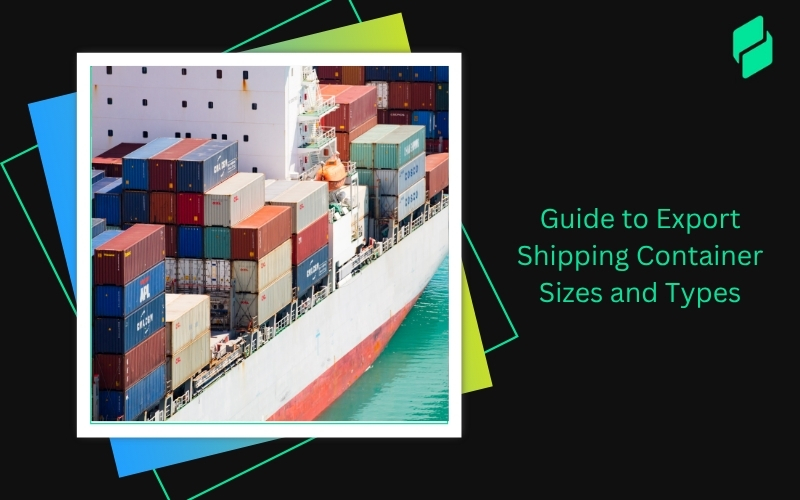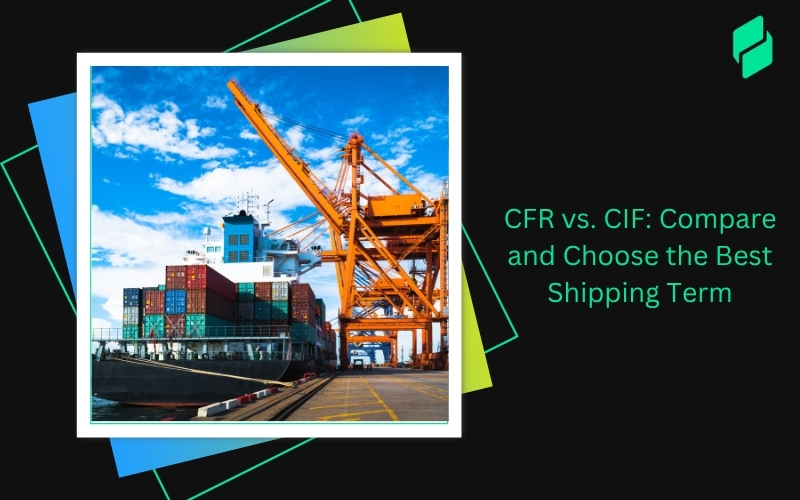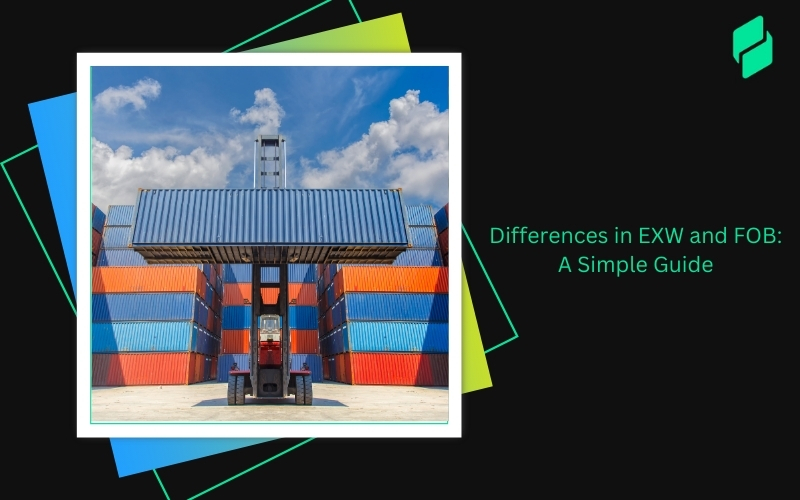Optimize your business: use unlimited savings with Pazago fulfilled now!
Get Started ->With e-commerce moving at lightning speed, your shipping strategy can make or break the customer experience. The method you use to deliver products isn’t just a logistical matter, it shapes customer experience, retention, and your profit margins. Two options dominate the landscape: standard shipping and express shipping. Each one plays a distinct role in meeting customer expectations.
Almost half of online consumers (40%) say they are willing to wait up to two days for orders delivered using fast shipping. This statistic highlights the rising expectation for rapid delivery options without entirely eliminating the relevance of more economical methods.
Customers today expect choices. Some prioritize quick delivery while others prefer lower costs. Offering both standard and express shipping lets you meet diverse needs and boost satisfaction.
While some customers demand speed, others value affordability and predictability. Striking the right balance between both methods enables you to serve a wider customer base and build a flexible, resilient fulfillment model.
This blog explores the definition, features, and practical differences between standard and express shipping. You'll learn about delivery times, cost implications, insurance coverage, and the strategic advantages each method offers.
What is Standard Shipping?

Standard shipping refers to the regular, cost-effective delivery method offered by most carriers. It's typically used for non-urgent shipments and can take anywhere from 3 to 7 business days within the U.S., depending on the carrier and distance.
This method is ideal for:
- E-commerce businesses ship everyday products.
- Customers are prioritizing affordability over speed.
- Shipments that don't require special handling or fast delivery.
While slower than express shipping, standard shipping is reliable and often includes basic tracking and insurance, making it a practical choice for budget-conscious senders.
Insurance and Protection
Standard shipping, while reliable, includes only basic coverage. The protection typically applies to a lower insured value, and the claims process tends to be lengthier and more administrative. This approach may be suitable for bulk, low-cost goods where speed and extensive insurance are less critical. However, businesses must weigh the trade-off: lower shipping costs come with reduced safeguards, which can impact customer satisfaction in the event of transit issues.
Pros of Standard Shipping
Below are some of the key advantages of using standard shipping for both businesses and customers:
1. Cost Efficiency: Standard shipping is a highly cost-effective option, especially for orders that do not require immediate delivery. By offering longer delivery times, this shipping method significantly reduces costs compared to expedited or express shipping.
2. Scalability: One of the key benefits of standard shipping is its ability to support large and steady order volumes. As businesses grow and their demand for shipping increases, standard shipping remains a reliable option to manage logistics costs. It allows companies to scale operations effectively by minimizing the additional expenses associated with faster delivery methods.
3. Reliability: Despite being slower than express shipping, standard shipping methods are often highly reliable. Shipping companies that offer standard services have established routes, delivery systems, and schedules that ensure consistent deliveries.
4. Environmental Impact: Standard shipping may also have a smaller carbon footprint compared to express options. By consolidating shipments and taking longer routes, shipping companies can minimize the number of trips required, which in turn reduces emissions.
5. Increased Flexibility: Standard shipping offers greater flexibility in terms of planning and delivery. Customers and businesses can choose when to ship and expect reliable, if not rapid, delivery within a reasonable timeframe.
6. Improved Customer Experience: While it may not appeal to those seeking instant gratification, many customers value the predictability and affordability of standard shipping.
Also Read: Top Logistics and Shipping Companies in India for 2024
What is Express Shipping?

Express shipping is a faster, premium delivery service designed for time-sensitive shipments. Depending on the carrier and destination, it usually delivers within 1 to 3 business days.
This method is best for:
- Urgent orders or last-minute purchases.
- Businesses are offering fast delivery options to customers.
- Items that need quick turnaround or secure handling.
Though more expensive than standard shipping, express services often include real-time tracking, insurance, and guaranteed delivery windows, making them ideal for high-priority deliveries.
Insurance and Protection
Express shipping often comes bundled with elevated insurance protection and streamlined claims processes. This premium tier of service is designed with risk mitigation in mind. Carriers prioritize these shipments not only in handling but also in compensation, leading to quicker reimbursement in the event of damage, loss, or delay.
For merchants shipping high-value or fragile items, this added layer of security justifies the cost and reinforces customer trust.
Advantages of Express Shipping
Below, we explore the key benefits of express shipping and how it can contribute to long-term business success.
- Speed and Responsiveness: Express shipping ensures fast, reliable delivery for urgent needs, boosting customer satisfaction and loyalty. It helps businesses stay competitive by meeting tight deadlines.
- Advanced Monitoring: Real-time tracking with express shipping keeps both sellers and buyers informed, reducing delivery issues and increasing transparency. This builds trust and peace of mind.
- Higher Customer Satisfaction: Fast delivery meets customer urgency, making buyers feel valued and encouraging repeat business. Quick shipments strengthen customer trust.
- Competitive Advantage: Offering express shipping attracts customers who prioritize speed, helping businesses stand out in a crowded market. Faster delivery can be a key differentiator.
- International Reach and Flexibility: Express options expand business reach globally and provide flexible delivery choices. This opens new revenue streams and meets diverse customer needs.
- Reduced Risk of Lost or Damaged Goods: Express services handle packages with extra care, lowering the chances of loss or damage. This reduces costs from returns or replacements.
- Enhanced Customer Loyalty and Repeat Business: Reliable express shipping encourages repeat purchases and builds long-term loyalty. Satisfied customers also generate positive word-of-mouth.
To make an informed decision about your delivery preferences, it's essential to understand the distinctions between shipping methods.
Key Differences Between Standard and Express Shipping
Standard and express shipping are two common options, each serving different needs. Understanding their key differences helps in selecting the most appropriate method for any given situation.
1. Delivery Time
The core difference lies in speed. Standard delivery typically spans 3-8 business days, while express shipping cuts that to 1-3 days. For customers in a rush, waiting is not an option. Express shipping allows them to receive their items almost immediately, often within hours or overnight. But standard timelines usually suffice for routine purchases like restocks or non-urgent items, creating no satisfaction drop.
2. Tracking Features
Express services often include advanced tracking tools with real-time location updates, delivery time estimates, and automated alerts. Customers receive continual visibility from dispatch to doorstep, which builds confidence and reduces service inquiries.
Standard shipping, though generally reliable, usually limits tracking to basic status milestones like “shipped,” “in transit,” and “delivered.” While sufficient for most, the lack of detailed updates can be a drawback in cases of delays or delivery exceptions. Businesses that manage customer support loads should consider this factor, as more comprehensive tracking often leads to fewer inquiries and greater post-purchase satisfaction.
Here’s a brief table of comparison between standard and express shipping:
Suggested Read: Differences Between Original and Express Bill of Lading
Choosing between speed and cost isn't always straightforward, as several factors can influence the right shipping option for you.
5 Key Factors for Choosing Standard vs. Express Shipping

Several key factors can impact cost, delivery time, and customer satisfaction when deciding between standard and express shipping. Understanding these considerations helps businesses and consumers make informed decisions that best suit their needs.
1. Urgency: Speed matters. If your product solves an immediate problem, or your customer needs it by a deadline, express shipping delivers the necessary speed.
2. Budget: Cost-sensitive operations benefit from standard shipping’s predictability and affordability. When margins are thin, every dollar saved on logistics counts. Offering standard delivery helps reduce cart abandonment by giving shoppers a low-cost option.
3. Geography: Remote locations may stretch timelines even for express services. On the other hand, standard shipping might offer wider accessibility, especially in international scenarios where express infrastructure is limited.
4. Product Type and Order Value: High-value or fragile goods often justify the cost of express shipping due to the enhanced handling and insurance. Conversely, low-cost, durable items may not benefit from the added expense.
5. Customer Expectations: Different customer segments have different priorities. First-time buyers may appreciate fast delivery as a trust-building gesture, while repeat buyers may opt for slower but free options.
Let’s now equip your business with the tools it needs to deliver faster and exceed customer expectations.
How Pazago Helps Speed Up Your Delivery

Choosing the right shipping method is a crucial decision in international trade. For Indian exporters, it impacts everything from delivery timelines and cost to compliance and customer satisfaction.
Standard and express shipping differ in speed and logistics coordination, document readiness, risk management, and communication. Platforms like Pazago make it easier to evaluate and manage both options effectively.
Here’s how key logistics components relate to the choice between standard and express shipping, and how Pazago helps streamline each process:
1. Quality Inspections and Shipping Readiness
Whether you're using standard or express shipping, ensuring goods meet quality and regulatory standards is essential. Express shipping requires faster inspection turnarounds. Pazago offers digital tools to simplify this process, so exporters can meet urgent timelines without sacrificing compliance.
2. Centralized Export Documentation
Express shipments often demand faster document processing to avoid customs delays. Standard shipping provides more time, but mistakes can still lead to setbacks. Pazago’s centralized documentation system helps exporters manage everything from invoices to certificates in one place, reducing errors and speeding up submission.
3. Smooth Communication Across the Supply Chain
Express deliveries leave little room for miscommunication. A missed update between suppliers, freight forwarders, or customs officials can cause costly delays. Pazago keeps all parties connected through a unified platform, helping exporters coordinate smoothly regardless of shipping speed.
4. Flexible Shipping Choices
Standard shipping is cost-effective for non-urgent orders. Express shipping suits high-priority or time-sensitive deliveries. With Pazago, exporters can compare options across a broad carrier network and select the one that best fits their budget and customer needs.
5. Real-Time Tracking
Tracking is valuable for both methods, but express shipping customers often expect real-time updates. Pazago offers live tracking tools that improve visibility across the delivery process. Exporters can monitor shipments and respond quickly to any issues, building trust and reliability.
6. Shipment Insurance
All shipments carry risks like loss or damage. Express deliveries may involve higher-value goods, making insurance even more critical. Pazago provides digital access to insurance services, making it easy to protect shipments and manage claims when needed.
7. Simplified International Payments
Express shipping often involves quicker turnaround times, which means payments must also move faster. Pazago supports smooth international transactions and currency conversions, helping exporters manage payments and cash flow across both shipping types.
Conclusion
Choosing between standard and express shipping involves more than just picking a delivery speed. It requires a thoughtful understanding of customer needs, product urgency, and overall logistics planning. While express shipping is ideal for time-sensitive orders, standard shipping works best when cost-efficiency and wide coverage are the priorities.
Trusted platforms like Pazago help you make informed choices by offering visibility, shipping flexibility, and streamlined coordination. Whether you're managing urgent deliveries or optimizing for cost, Pazago gives you the tools to stay in control and grow confidently.
Want to see how Pazago can support your shipping strategy? Schedule a demo today and let us show you how simple logistics can be.


.png)








